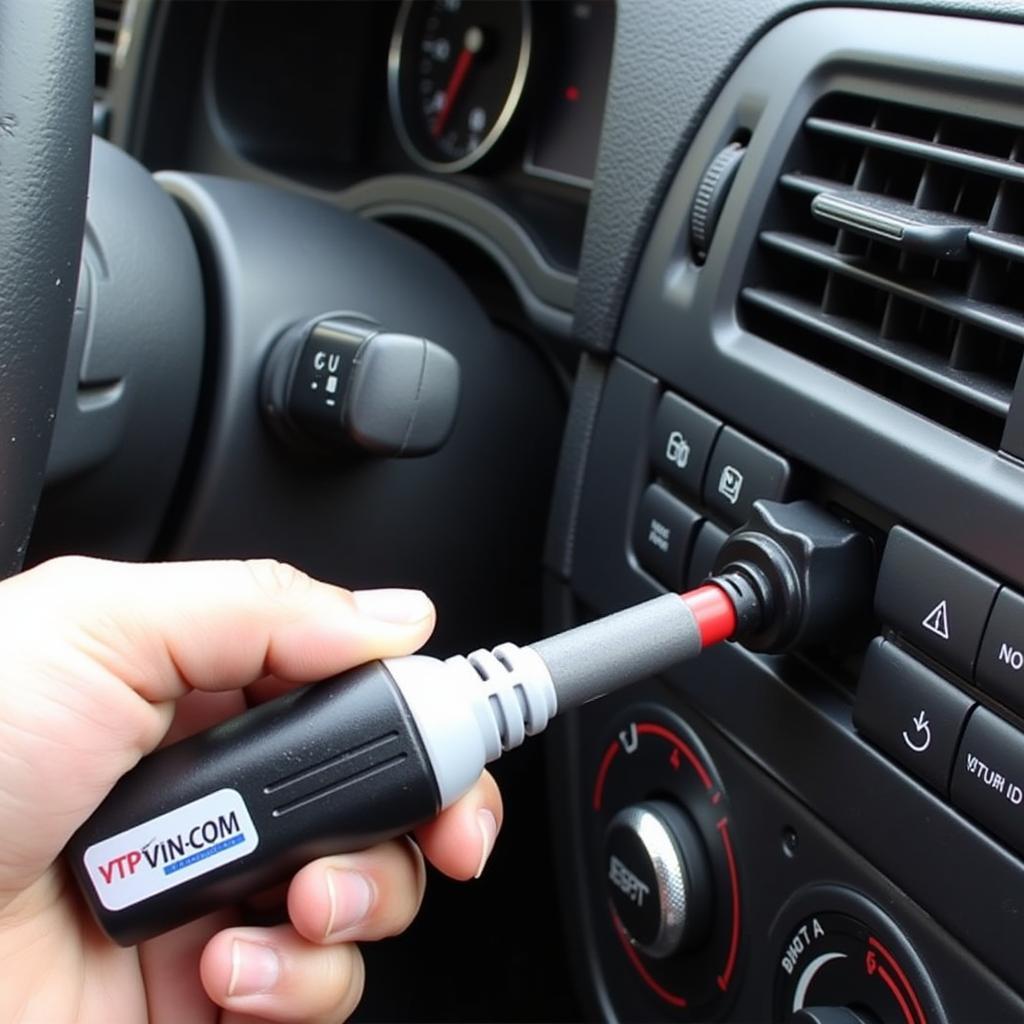Your cart is currently empty!

VAG-COM VW: Using Adaptation vs Coding for Car Repairs
When troubleshooting your Volkswagen or Audi vehicle with a VAG-COM cable and software, you’ll encounter two powerful features: Adaptation and Coding. While both offer ways to modify your car’s control modules, they serve distinct purposes and require a cautious approach. This article delves into the differences between VAG-COM VW adaptation vs coding, equipping you to make informed decisions when using this powerful diagnostic tool.
 VAG-COM Cable Connected to Car
VAG-COM Cable Connected to Car
Understanding VAG-COM Adaptation
Adaptation, in the context of VAG-COM, refers to adjusting pre-programmed values within a control module to fine-tune a specific function. Think of it as tweaking existing settings within a defined range rather than fundamentally changing the module’s operation. These adjustments compensate for wear and tear, optimize performance after component replacement, or personalize certain features to your liking.
Here’s a closer look at adaptation:
- Purpose: Fine-tune existing settings
- Scope: Limited to pre-defined values
- Examples: Adjusting throttle body alignment, setting automatic window closing points, modifying automatic transmission shift points
 VAG-COM Software Displaying Adaptation Options
VAG-COM Software Displaying Adaptation Options
Diving into VAG-COM Coding
Coding, on the other hand, delves into the core functionality of a control module. It involves changing the actual code that governs how a module behaves, unlocking new features, disabling existing ones, or tailoring the car’s systems to your specific requirements.
Here’s a breakdown of coding:
- Purpose: Modify core module functionality
- Scope: Extensive changes possible
- Examples: Enabling/disabling daytime running lights, adding/removing comfort features, retrofitting aftermarket components
Expert Insight: “Think of adaptation as fine-tuning a radio station’s signal for clarity, while coding is like adding a whole new antenna for better reception,” explains John Miller, Senior Automotive Electrician at Miller’s Auto Tech. “Both are useful, but understanding their distinct roles is crucial.”
When to Use Adaptation vs Coding
Choosing between adaptation and coding depends entirely on the task at hand. Here’s a simple guide:
-
Use Adaptation When:
- Calibrating components after replacement (e.g., throttle body, steering angle sensor)
- Optimizing existing functions for better performance (e.g., transmission shift points, idle speed)
- Personalizing comfort settings (e.g., automatic door locking, mirror adjustments)
-
Use Coding When:
- Enabling hidden features (e.g., daytime running lights, cornering fog lights)
- Disabling unwanted functions (e.g., automatic start-stop, seatbelt chime)
- Retrofitting aftermarket equipment (e.g., parking sensors, navigation systems)
Expert Insight: “Always back up your original coding and adaptation values before making any changes,” advises Maria Sanchez, Lead Diagnostic Technician at Sanchez Automotive Solutions. “This allows you to revert to the default settings in case of errors or unexpected behavior.”
 Mechanic Using VAG-COM for Car Diagnostics
Mechanic Using VAG-COM for Car Diagnostics
Cautions and Best Practices
Both adaptation and coding, while powerful, require caution:
- Research Thoroughly: Understand the implications of any changes before implementing them.
- Back Up Your Settings: Always save your original settings before making any modifications.
- Start Small: Begin with minor adjustments to familiarize yourself with the process.
- Consult Experts: If unsure, seek guidance from experienced VAG-COM users or professionals.
Conclusion
Mastering the distinction between adaptation and coding in VAG-COM unlocks a world of customization and troubleshooting potential for your Volkswagen or Audi. By understanding their purposes, scopes, and best practices, you’re equipped to fine-tune and enhance your car’s performance while avoiding potential pitfalls. Remember to prioritize thorough research, back up your settings, and seek expert guidance when needed.
For further assistance with VAG-COM tools and diagnostics, feel free to contact us at +1 (641) 206-8880 and our email address: vcdstool@gmail.com or visit our office at 6719 W 70th Ave, Arvada, CO 80003, USA. Our team at VCDSTool is always ready to help you unlock the full potential of your vehicle.
by
Tags:
Leave a Reply